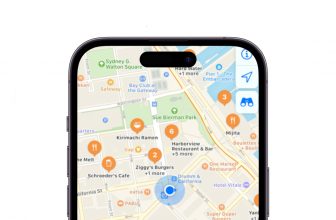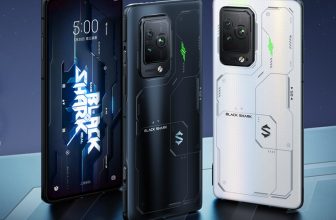
We now have a clear picture of how next-generation mobile processors coincide with one another, thanks to Samsung finally revealed the Exynos 2200.
Samsung’s flagship processor will compete with Qualcomm‘s Snapdragon 8 Gen 1 and Mediatek‘s Dimensity 9000 as premium-tier chipsets for high-profile smartphone debuts in 2022.
For the time being, Samsung has only provided some specifications for the Exynos 2200. As we get closer to the introduction of its Galaxy S22 flagship series, more details will undoubtedly become available, and we’ll update this piece as we discover more.
For now, let’s compare the Exynos 2200 vs Dimensity 9000 vs Snapdragon 8 Gen 1 on paper.
Exynos 2200 vs Dimensity 9000 vs Snapdragon 8 Gen 1 Specs
| Specs | Samsung Exynos 2200 | Mediatek Dimensity 9000 | Qualcomm Snapdragon 8 Gen 1 |
|---|---|---|---|
|
CPU
|
1x Cortex-X2
3x Cortex-A710 4x Cortex-A510 |
1x Cortex-X2 @ 3.05GHz
3x Cortex-A710 @ 2.85GHz 4x Cortex-A510 @ 1.8GHz |
1x Cortex-X2 @ 3GHz
3x Cortex-A710 @ 2.5GHz 4x Cortex-A510 @ 1.8GHz |
|
RAM
|
LPDDR5
|
LPDDR5X
|
Adreno
|
|
Display
|
144Hz at QHD+
120Hz at 4K |
180Hz at FHD+
|
144Hz at QHD+
60Hz at 4K |
|
GPU
|
Xclipse 920
AMD RDNA2 cores |
Arm Mali-G710 MC10
|
Adreno
|
|
Machine learning
|
Dual-core NPU + DSP
|
APU 5.0 six cores |
Hexagon
|
|
Camera
|
200MP single
64MP+36MP dual 8K/30fps, 4K/120fps, 4K HDR recording |
320MP single
32MP+32MP+32MP triple 8K/24fps recording 4K HDR Video |
200MP single
64MP+36MP dual 36MP+36MP+36MP triple 8K/30fps HDR recording |
|
Video playback
|
8K
AV1, H.264, H.265, VP9 decode |
8K
AV1, H.264, H.265, VP9 decode |
8K
H.264, H.265, VP9 decode |
|
Modem
|
7.35Gbps download
(mmWave) 5.1Gbps download (sub-6GHz)3GPP Release 16 5G |
7Gbps download (sub6GHz) 3GPP Release 16 5G |
10Gbps download (mmWave)
Sub-6GHz speed unknown3GPP Release 16 5G |
|
Connectivity
|
Bluetooth 5.3
Wi-Fi 6E |
Bluetooth 5.2
Wi-Fi 6E |
|
|
Process
|
4nm Samsung
|
4nm TSMC
|
4nm Samsung
|
CPU
All three of the upcoming next-generation mobile CPUs use Arm’s newest off-the-shelf CPU cores based on the Armv9 architecture, as you’ve probably seen. The Arm Cortex-X2, the mid-tier Cortex-A710, and the power-efficient Cortex-A510 are the processors in question.
The Google Tensor, which employs the previous-gen Cortex-X1, A78, and A55 cores based on the Armv8 architecture in a more experimental 2+2+4 configuration, is the one exception from recent chipset announcements.
We expect similar performance from the newest Snapdragon, Exynos, and Dimensity chips, which all have the same CPU cores and 1+3+4 layout.
Due to clock speed and cache variances, we may observe a few percentage points difference in benchmark results, especially as Mediatek employs the better TSMC 4nm manufacturing process instead of Samsung 4nm.
RAM
However, barring any apparent overheating or throttling concerns, the basic experiences will likely be almost comparable in all three. It’s also worth mentioning that Mediatek offers somewhat faster LPDDR5X RAM than its rivals, however, it’ll be up to partner devices to make use of this benefit.
Graphics
In the graphics department, there are far more significant variances. The most well-known model is Mediatek’s Dimensity 9000, which uses an Arm Mali-G710 MC10 GPU to deliver a 35 percent performance gain over last year’s Snapdragon 888.
Qualcomm has eliminated the numbers from its naming practice, so we know even less about its newest Adreno GPU. Everything known is that it renders 30 % faster than the previous generation, implying that this will be a close race between the two.
As Samsung adds hardware-backed ray tracing, GPU features and capabilities are expected to diverge more than ever this generation.
Samsung’s Exynos 2200 might be the most significant advancement in mobile graphics in the future. The AMD RDNA2 architecture that powers the PlayStation 5 and Xbox Series consoles, as well as high-end PC graphics cards, are used in the Xclipse 920 GPU.
The Exynos 2200 GPU also has hardware-based ray tracing, which will undoubtedly be more powerful than Mediatek’s software support. Nevertheless, we’d also need games to make use of this technology.
Although we should always take rumors with a grain of salt, this might explain why Samsung abruptly canceled its planned launch event and remained silent on performance.
In a recent test on Geeckbench 5, MediaTek Dimensity 9000 beat Exynos 2200 and even Snapdragon 8 Gen 1.






